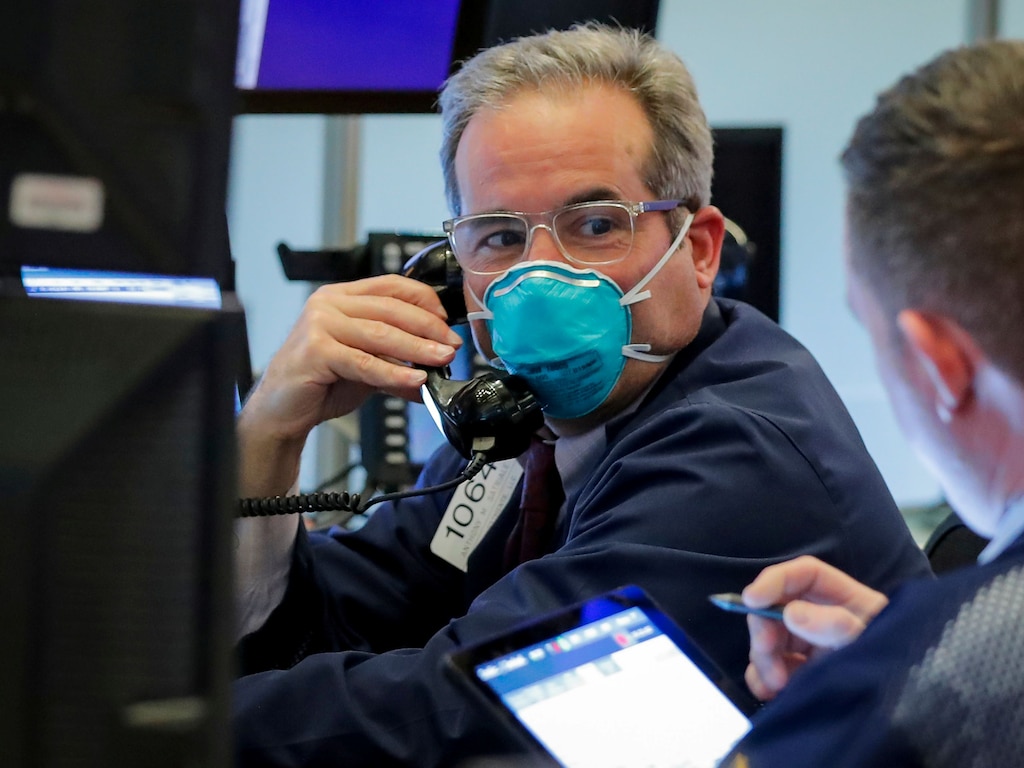 Reuters
Reuters
- Goldman Sachs thinks economic activity has likely bottomed as lockdowns and social distancing restrictions start to ease across the globe.
- In a note published Monday morning, Goldman estimated that global GDP has fallen about 16% since January, but predicted an economic recovery shaped like a “V” sequentially and a “U” annually.
- The bank said that firms and households will be able to adapt to higher economic activity combined with “continued virus control via a range of adjustment mechanisms” like mask and glove wearing, frequent cleanings of workplaces, lower office and retail occupancy, and improved testing and contact tracing.
- Visit Business Insider’s homepage for more stories.
Goldman Sachs thinks economic activity has likely bottomed as lockdowns and social distancing restrictions due to the coronavirus pandemic start to ease across the globe, according to a note published Monday morning.
Although the bank estimated that global gross domestic product has fallen 16% since January, it expects a V-shaped and U-shaped economic recovery, depending on the time frame.
“We expect GDP to grow … as firms and households learn to combine higher economic activity with continued virus control via a range of adjustment mechanisms including mask and glove wearing, frequent cleanings of workplaces, lower office and retail occupancy, and improved testing and contact tracing,” Goldman said.
China has seen economic activity rebound quickly since February, and Goldman said that if Western economies can manage even a partial recovery rate relative to China, “that would imply brisk sequential activity growth in the remainder of Q2.”
Goldman predicted that on a quarterly basis, we will see a V-shaped economic recovery, and on an annual basis, we will see a U-shaped recovery.
“On a quarterly basis, we continue to forecast a recovery that looks U-shaped in year-on-year terms but V-shaped in sequential terms, with quarter-on-quarter annualized GDP growth rates averaging -32% in Q2, +16% in Q3, and +13% in Q4 across the advanced economies,” according to the investment bank.
 Goldman Sachs Research
Goldman Sachs Research
Goldman said that grounds for cautious optimism include suggested evidence that warmer temperatures and low-cost hygiene measures like handwashing and masks can lower infection rates meaningfully, treatment options are likely to improve in coming months, and “different approaches to reopening businesses across countries and states should help policymakers decide what is an acceptable risk and what isn’t.”
And while there are significant second-round risks to financial conditions and business and household income due to the economic shock caused by the coronavirus pandemic, the bank said the “timely and aggressive action by the Federal Reserve has kept our Financial Conditions Index much easier than in past cycles, including not only the Great Recession of 2008 but also the mild 2001 downturn.”
Goldman’s Financial Conditions Index measures how tight or how loose financial conditions are, which relates to a company’s ability to raise cash at any given moment.
Goldman observed that the fiscal response from the US government, like the Paycheck Protection Program, which covers eight weeks of payroll and other costs for firms with up to 500 employees, should help businesses for now, but the relief may prove to be too short as businesses remain closed through May.
Goldman will be closely monitoring trends in bankruptcies to gauge business income levels, which so far have seen a slight uptick in April.
Still, the biggest downside risk to the global economic outlook, according to Goldman, “is that infection rates reaccelerate sharply as the economy reopens; after all, our analysis confirms that much of the medical improvement has resulted from lockdowns and social distancing.”













